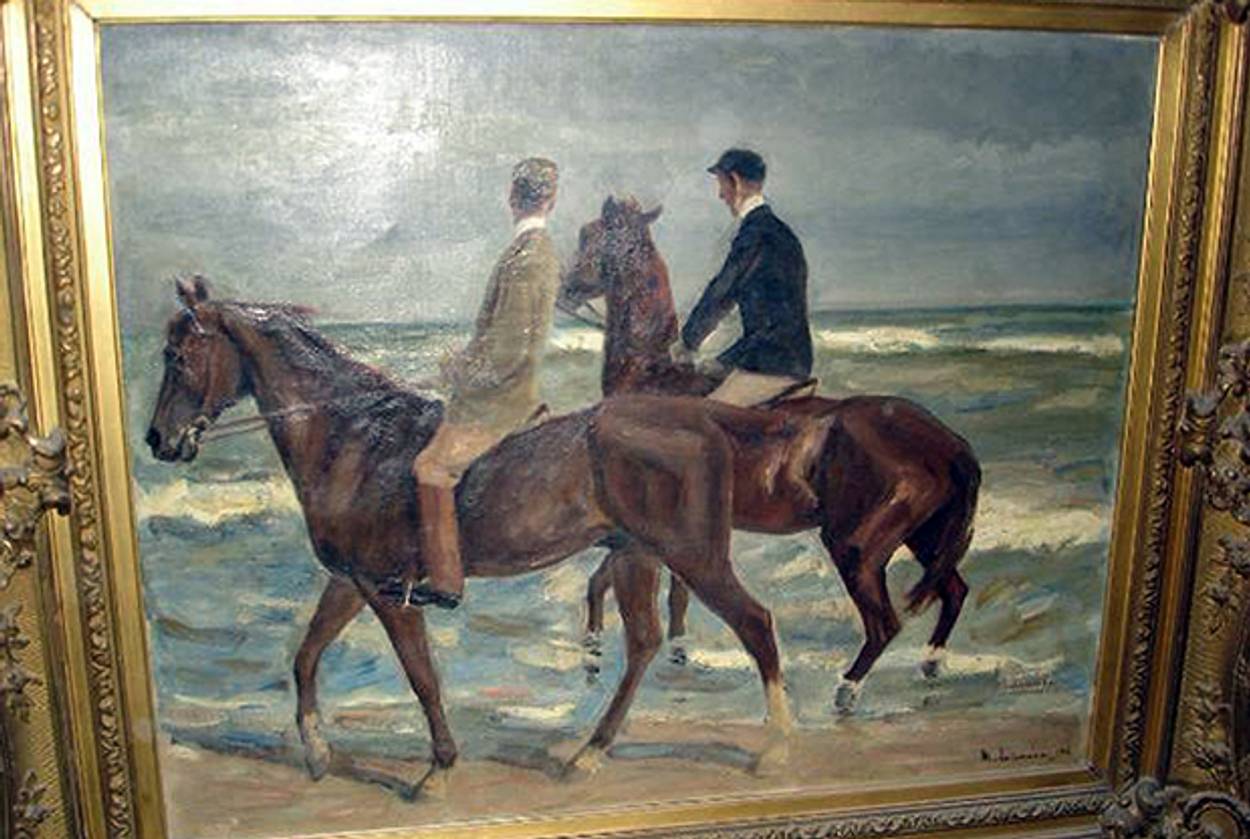Germany Orders Nazi-Looted Painting Returned to Jewish Heirs
Max Liebermann painting part of massive Munich trove discovered in 2012




German experts investigating the trove of Nazi-looted art stashed in the home of the late Cornelius Gurlitt announced Friday that a 1901 Max Liebermann painting, “Two Riders on the Beach,” was stolen during World War II and must be returned to the heirs of German-Jewish art collector David Friedmann, the Wall Street Journal reports.
Friedmann’s 89-year-old great-nephew, David Toren, the heir to the painting, filed a lawsuit against the Bavarian and German governments in March to have the painting returned.
He last remembers seeing the work as a child at Friedmann’s home. Friedmann died in the early 1940s, and his daughter committed suicide to escape Nazi persecution soon after his death. Toren and his brother were the only members of their family who survived the Holocaust. Toren’s brother, who died several months ago, is survived by three daughters, and Toren has one son. According to the Wall Street Journal, the family hasn’t decided who will get the painting.
It is unclear when the painting will be returned to the heirs. The condition of the painting is also unknown.
In February 2012, authorities discovered a massive collection of artwork worth more than $1 billion in the Munich apartment of Cornelius Gurlitt while investigating him for suspected tax evasion. The collection, which contains more than a thousand works, was amassed by Gurlitt’s father, an art dealer who was allegedly ordered by Hitler to obtain and sell the art to help finance Nazi projects.
In April 2014, the German government reached an agreement with Gurlitt’s lawyers that allowed a government-appointed team of art experts one year to determine the ownership of each piece. A month later, Gurlitt died at the age of 81.
In a strange twist, Gurlitt’s will named the Kunstmuseum Bern in Switzerland the sole heir to the collection. The museum has until the end of the year to accept the works, in which case it would be legally required to return the Liebermann painting, as well as Matisse’s 1921 “Woman Sitting in an Armchair,” which the German government in June ruled rightfully belonged to the heirs of Paris art dealer Paul Rosenberg.
Previous: Germany Rules Matisse Belongs to Jewish Heirs
Major Nazi-Looted Art Collection to be Returned
Related: Cross Pollination
Isabel Fattal, a former intern at Tablet Magazine, attends Wesleyan University.